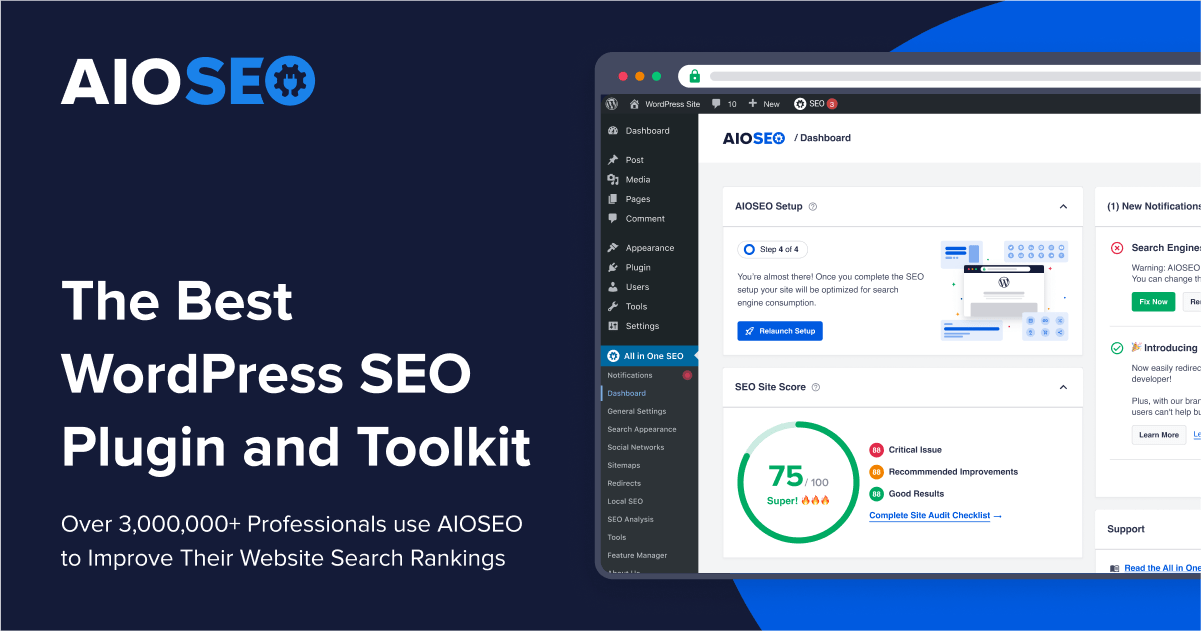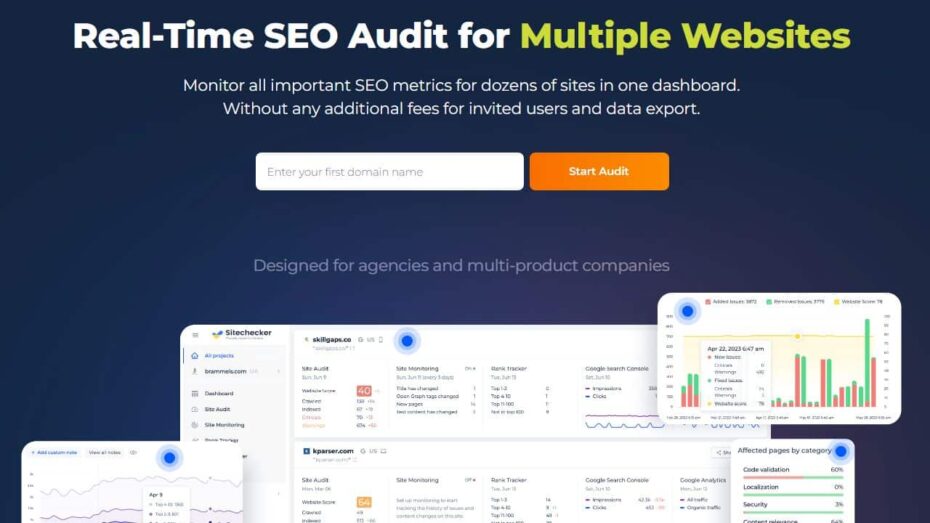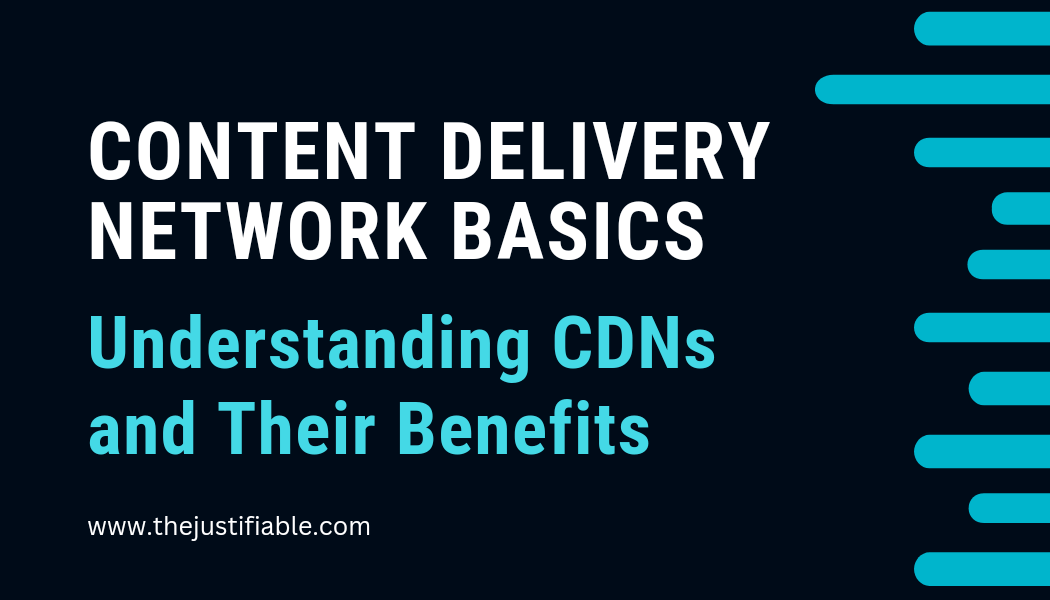Table of Contents
Understanding what article writers should know about SEO is crucial for creating content that ranks well on search engines and attracts readers. This guide will cover essential SEO strategies and tips that every article writer should master.
Top SEO Strategies Every Article Writer Needs to Know
Implementing effective SEO strategies is essential for article writers aiming to improve their content’s visibility and reach. By understanding and utilizing these techniques, you can ensure that your articles rank higher on search engine results pages (SERPs) and attract a wider audience. Let’s dive into the top strategies you should focus on.
One of the fundamental aspects of SEO is keyword research. Knowing how to identify and use the right keywords can make a significant difference in how your content performs. Another crucial strategy is mastering on-page SEO techniques. This involves optimizing various elements within your content to improve its search engine ranking. Additionally, crafting compelling and SEO-friendly headlines and subheadings can enhance readability and increase engagement.
SEO Services Recommendations
 AIOSEO
|  Sitechecker
|  Squirrly
|
Keyword Research and Its Importance
Keyword research is the backbone of any successful SEO strategy. It involves identifying the words and phrases that your target audience is likely to use when searching for information related to your content. By incorporating these keywords naturally into your articles, you can increase your chances of ranking higher on SERPs.
Start by using keyword research tools like SEOPowersuite, or SEMrush to find relevant keywords. Look for keywords with a good balance of search volume and competition. High search volume indicates that many people are looking for that term, while low competition means fewer websites are trying to rank for it.
Once you have your list of keywords, integrate them naturally throughout your content. Avoid keyword stuffing, as it can lead to penalties from search engines. Instead, focus on creating high-quality content that provides genuine value to your readers while seamlessly incorporating your keywords. This approach ensures that your content remains engaging and informative while also being optimized for search engines.
Another important aspect of keyword research is understanding user intent. This means knowing what your audience is looking for when they type in a particular keyword. Are they seeking information, looking to make a purchase, or comparing products? By aligning your content with user intent, you can provide more relevant and helpful information, which can improve your SEO performance.
On-Page SEO Techniques for Writers
On-page SEO involves optimizing various elements within your article to improve its search engine ranking. This includes aspects like meta titles, meta descriptions, headers, and internal linking. By mastering these techniques, you can ensure that your content is both user-friendly and search engine-friendly.
Start with your meta title and description. These are the first things users see on the SERPs, so make them compelling and informative. Include your primary keyword in both the title and description, but ensure they read naturally and provide a clear summary of your content.
Headers (H1, H2, H3, etc.) play a crucial role in on-page SEO. They help structure your content and make it easier for readers to navigate. Use your primary and related keywords in your headers, but do so naturally. This helps search engines understand the main topics of your article and can improve your ranking.
Internal linking is another effective on-page SEO technique. By linking to other relevant articles on your website, you can keep readers engaged and reduce bounce rates. It also helps search engines crawl your site more effectively. Make sure your anchor text is descriptive and relevant to the linked content.
Lastly, optimize your images by using descriptive file names and alt text. This helps search engines understand the content of your images and can improve your chances of ranking in image search results. Compress your images to ensure they don’t slow down your page loading speed, as this can negatively impact your SEO.
Crafting SEO-Friendly Headlines and Subheadings
Creating compelling headlines and subheadings is crucial for both SEO and reader engagement. Your headlines should grab attention and entice readers to click, while your subheadings should make your content easy to navigate and digest.
When crafting your headlines, include your primary keyword naturally. Aim for headlines that are between 55-70 characters long, as this is the optimal length for search engines. Use power words like “essential,” “proven,” or “effective” to make your headlines more appealing and persuasive.
Subheadings (H2, H3, etc.) should break your content into manageable sections. This not only improves readability but also helps search engines understand the structure of your article. Include your primary and related keywords in your subheadings, but ensure they flow naturally with the rest of your content.
Another tip is to use questions in your subheadings. This can increase reader engagement, as people are naturally curious and more likely to continue reading to find the answer. For example, a subheading like “What Are the Benefits of On-Page SEO?” can draw readers in and encourage them to keep reading.
Finally, make sure your headlines and subheadings are clear and concise. Avoid jargon and complicated language, and focus on delivering a distinct message to your readers. This approach ensures that your content is both accessible and valuable, which can improve your SEO performance and reader satisfaction.
How to Optimize Content for Search Engines
Optimizing content for search engines is essential for improving visibility and attracting more readers. By focusing on SEO best practices, you can ensure your content ranks higher on search engine results pages (SERPs) and engages your audience. This section will explore how to effectively use primary keywords, incorporate long-tail keywords, and maintain high-quality, engaging content.
SEO optimization is more than just placing keywords throughout your content. It involves understanding user intent, creating valuable content, and following best practices to ensure your articles are both informative and accessible. Implementing these strategies can significantly enhance your content’s performance.
Using Primary Keywords Naturally
Using primary keywords naturally in your content is crucial for effective SEO. Start by identifying the main keyword that reflects the core topic of your article. Tools like Google Keyword Planner and Ahrefs can help you find relevant keywords with high search volume and low competition.
Incorporate your primary keyword in key areas such as the title, introduction, and headers. For instance, if your primary keyword is “how to optimize content for search engines,” you might begin your introduction with a sentence like, “Understanding how to optimize content for search engines is essential for improving your site’s visibility.” This method ensures the keyword is integrated seamlessly.
Avoid overusing the primary keyword, as keyword stuffing can lead to penalties from search engines. Instead, focus on writing naturally and ensuring the keyword fits contextually within your content. Use synonyms and related phrases to maintain variety and enhance readability.
Additionally, place the primary keyword in your meta title and meta description. These elements are the first things users see on SERPs, so make them compelling and informative. A well-crafted meta description can significantly improve your click-through rate.
Incorporating Long-Tail Keywords Effectively
Long-tail keywords are more specific phrases that often have lower search volume but higher conversion rates. Incorporating these keywords effectively can help you attract a targeted audience and improve your content’s SEO performance.
Start by researching long-tail keywords related to your primary keyword. Tools like Squirrly and Ubersuggest can provide a list of long-tail keywords that are relevant to your topic. For example, if your primary keyword is “how to optimize content for search engines,” long-tail keywords might include “best practices for content optimization” or “optimize blog posts for SEO.”
Integrate long-tail keywords naturally throughout your content. Use them in subheadings, within the body of your article, and in image alt text. This approach helps search engines understand the specific topics your content covers and can improve your ranking for those phrases.
Long-tail keywords are also useful for capturing user intent. By addressing specific questions or problems your audience may have, you can create content that is highly relevant and valuable. For instance, a subheading like “Best Practices for Content Optimization in 2024” directly addresses a specific need and can attract readers searching for up-to-date information.
Finally, long-tail keywords can help you rank for voice search queries. With the rise of voice assistants like Siri and Alexa, more users are searching using natural language. By incorporating long-tail keywords that reflect how people speak, you can optimize your content for these types of searches.
Ensuring High-Quality and Engaging Content
High-quality, engaging content is the cornerstone of successful SEO. Not only does it attract readers, but it also encourages them to stay on your site longer, reducing bounce rates and increasing your chances of higher rankings.
Start by providing genuine value to your readers. Conduct thorough research on your topic and include accurate, up-to-date information. Use data, statistics, and credible sources to back up your claims. This approach establishes your authority and trustworthiness.
Make your content engaging by using a conversational tone. Speak directly to your readers and use personal pronouns like “you” and “we.” Ask questions and encourage interaction to keep your audience involved. For example, “Have you ever wondered how to optimize your content for search engines effectively?”
Break up your content with subheadings, bullet points, and images. This makes it easier to read and digest. Use multimedia elements like videos and infographics to enhance your content and provide additional value. Visual aids can help illustrate complex points and keep readers engaged.
Lastly, focus on readability. Use short paragraphs and simple sentences. Avoid jargon and technical terms that might confuse your readers. Tools like Hemingway Editor can help you simplify your writing and ensure it is accessible to a broader audience. By prioritizing clarity and readability, you can create content that is both informative and enjoyable to read.
The Role of Backlinks in SEO
Backlinks play a pivotal role in SEO, acting as endorsements from one website to another. Understanding what article writers should know about SEO includes grasping the importance of backlinks in enhancing your content’s credibility and visibility. These links can significantly boost your site’s authority and improve your rankings on search engine results pages (SERPs).
High-quality backlinks signal to search engines that your content is trustworthy and valuable. When reputable sites link to your articles, it shows that your content is a reliable source of information, thereby improving your site’s overall SEO performance. Let’s explore effective strategies for earning quality backlinks and the difference between internal and external linking.
Strategies to Earn Quality Backlinks
Earning quality backlinks is essential for strengthening your SEO strategy. One powerful approach is to create exceptional, shareable content that naturally attracts links. High-quality articles, comprehensive guides, and unique research can compel other websites to link back to your content. Ensure your content provides genuine value and stands out in your niche.
Guest blogging is another effective method. By contributing high-quality posts to reputable sites in your industry, you can gain backlinks and expand your reach. When pitching to blogs, ensure your content is relevant and adds value to their audience. This not only earns you backlinks but also builds your authority in your field.
Building relationships with influencers and other content creators in your industry can also be beneficial. Engage with their content, share insights, and offer collaboration opportunities. When you establish genuine connections, they are more likely to link to your articles, enhancing your backlink profile.
Another strategy involves broken link building. This process involves finding broken links on other websites and suggesting your content as a replacement. Use tools like Ahrefs or SEMrush to identify broken links in your niche. Reach out to the site owner, informing them of the broken link and suggesting your relevant content as a replacement. This approach not only earns you a backlink but also helps improve the linking site’s user experience.
Understanding Internal and External Linking
Understanding the difference between internal and external linking is crucial for optimizing your SEO strategy. Internal links connect different pages within your website, helping users navigate your content more effectively. They also help search engines understand the structure of your site and the relationship between different pages.
External links, on the other hand, point from your site to other websites. These links can enhance your content’s credibility by referencing authoritative sources. While they do direct traffic away from your site, they also signal to search engines that your content is well-researched and valuable.
Effective internal linking involves strategically placing links within your content to guide readers to related articles or important pages. Use descriptive anchor text that clearly indicates what the linked page is about. For instance, if you mention a related topic like “content optimization techniques,” link to a relevant article on that subject.
External linking should be done thoughtfully. Link to authoritative, high-quality sources that provide additional value to your readers. For example, if you reference a study or statistic, link to the original source. This not only enhances your content’s credibility but also builds trust with your readers.
Balancing internal and external linking is key. Ensure your internal links create a logical flow for users, guiding them through your content naturally. External links should complement your content, providing additional context and resources. By mastering both types of linking, you can improve your site’s SEO and provide a better user experience.
Understanding SEO Metrics and Analytics
Monitoring SEO metrics and analytics is vital for evaluating the success of your content and identifying areas for improvement. Knowing what article writers should know about SEO includes understanding which metrics to track and the tools available for this purpose. These insights help you refine your strategy and achieve better results.
Key metrics such as organic traffic, bounce rate, and conversion rates offer valuable information about your content’s performance. By analyzing these metrics, you can make data-driven decisions to optimize your articles and enhance your overall SEO efforts. Let’s delve into the specific metrics and tools you should focus on.
Key Metrics to Track for Article Performance
Tracking the right SEO metrics is crucial for understanding how well your articles are performing. Organic traffic is one of the most important metrics. It shows the number of visitors coming to your site through search engines, indicating how well your content ranks for relevant keywords.
Bounce rate measures the percentage of visitors who leave your site after viewing only one page. A high bounce rate may indicate that your content isn’t engaging or that it doesn’t meet the user’s expectations. Aim to keep visitors on your site longer by providing valuable, relevant content and linking to related articles.
Conversion rate is another critical metric. It measures the percentage of visitors who complete a desired action, such as signing up for a newsletter or making a purchase. High conversion rates indicate that your content effectively persuades readers to take action. To improve this metric, ensure your calls-to-action are clear and compelling.
Engagement metrics, such as average session duration and pages per session, provide insights into how users interact with your content. Longer session durations and higher pages per session suggest that readers find your content valuable and are exploring more of your site. Use these insights to refine your content strategy and enhance user experience.
Tools for Monitoring SEO Success
Several tools can help you monitor your SEO success and track essential metrics. Kissmetrics is a powerful tool that provides comprehensive data about your site’s performance. It tracks metrics like organic traffic, bounce rate, and conversion rates, offering valuable insights into your content’s effectiveness.
Google Search Console is another essential tool. It helps you monitor your site’s presence in Google search results, track keyword rankings, and identify issues that may affect your SEO performance. Use it to submit sitemaps, track indexing status, and receive alerts about potential problems.
Sitechecker and Ahrefs are advanced SEO tools that offer in-depth analysis and competitive insights. They provide data on keyword rankings, backlinks, and site audits, helping you optimize your content and stay ahead of competitors. These tools also offer keyword research features, allowing you to discover new opportunities for content optimization.
Moz is another valuable tool for SEO monitoring. It offers insights into your site’s domain authority, keyword performance, and backlink profile. Moz’s features can help you identify areas for improvement and track your progress over time. By leveraging these tools, you can gain a comprehensive understanding of your SEO performance and make informed decisions to enhance your strategy.
Common SEO Mistakes to Avoid
Understanding what article writers should know about SEO includes being aware of common mistakes that can hinder your content’s performance. Avoiding these pitfalls is crucial for ensuring your content ranks well and provides value to your readers. Let’s explore some of the most frequent SEO mistakes and how to avoid them.
SEO mistakes can range from technical issues to content-related errors. By addressing these common problems, you can improve your site’s search engine rankings and deliver a better user experience. This section will cover keyword stuffing, duplicate content, and the importance of mobile optimization.
Avoiding Keyword Stuffing
Keyword stuffing is one of the most common SEO mistakes. It involves overusing keywords in your content in an attempt to manipulate search engine rankings. This practice not only makes your content difficult to read but can also lead to penalties from search engines, ultimately harming your SEO efforts.
To avoid keyword stuffing, focus on creating high-quality content that naturally incorporates your primary keyword. Use synonyms and related phrases to maintain variety and ensure your writing flows smoothly. For example, instead of repeatedly using “common SEO mistakes to avoid,” you might use “frequent SEO pitfalls” or “typical SEO errors” as variations.
Integrate your primary keyword strategically. Include it in the title, introduction, headers, and occasionally throughout the body of your text. Ensure each instance of the keyword adds value and makes sense within the context. This approach keeps your content engaging and avoids the risk of keyword stuffing.
Additionally, prioritize user experience over keyword density. Search engines are increasingly focusing on content quality and relevance. Write for your audience first and foremost, providing valuable information that addresses their needs and questions. By doing so, you naturally incorporate keywords in a way that enhances your content rather than detracting from it.
The Pitfalls of Duplicate Content
Duplicate content refers to blocks of text that appear in more than one location on the internet, either within your site or across different sites. This can confuse search engines and dilute your content’s value, negatively impacting your SEO performance. Avoiding duplicate content is essential for maintaining a strong SEO strategy.
Ensure each piece of content on your site is unique. If you have similar topics, approach them from different angles and provide fresh insights. For example, instead of duplicating content about “SEO tips for beginners,” you could create separate articles focusing on “advanced SEO techniques” or “SEO mistakes to avoid.”
Use canonical tags to manage duplicate content. A canonical tag tells search engines which version of a page is the preferred one, helping to consolidate duplicate content and improve your SEO. Implementing canonical tags can be particularly useful for e-commerce sites with similar product pages.
Regularly audit your site for duplicate content. Tools like Copyscape and Screaming Frog can help you identify and address any instances of duplication. By staying vigilant, you can ensure your content remains unique and valuable, enhancing your SEO performance.
If you need to repurpose content, consider updating and expanding it instead of duplicating it. Add new information, insights, and data to provide additional value. This approach not only avoids duplicate content issues but also keeps your articles relevant and engaging for your audience.
Importance of Mobile Optimization
Mobile optimization is a critical aspect of SEO that is often overlooked. With an increasing number of users accessing the internet via mobile devices, ensuring your site is mobile-friendly is essential for maintaining strong SEO performance. Google also uses mobile-first indexing, meaning it primarily uses the mobile version of your site for ranking and indexing.
Start by using a responsive design. A responsive website automatically adjusts its layout and content to fit different screen sizes, providing a seamless user experience across all devices. This not only improves usability but also enhances your site’s SEO.
Optimize page load speed for mobile devices. Slow-loading pages can lead to high bounce rates, negatively impacting your SEO. Use tools like Google PageSpeed Insights to identify and fix issues that may be slowing down your site. Compress images, leverage browser caching, and minimize JavaScript to improve load times.
Ensure your content is easily readable on mobile devices. Use larger fonts, shorter paragraphs, and plenty of white space to enhance readability. Avoid using flash and pop-ups, as these can be difficult to navigate on mobile devices and may frustrate users.
Regularly test your site on different mobile devices to ensure it functions correctly. Check for issues like broken links, overlapping elements, and navigation difficulties. By prioritizing mobile optimization, you can improve user experience and boost your SEO performance.
Advanced SEO Techniques for Experienced Writers
For those who have mastered basic SEO principles, advanced techniques can further enhance your content’s performance. Understanding what article writers should know about SEO includes leveraging these sophisticated strategies to stay ahead of the competition. This section will cover schema markup, optimizing for voice search, and staying updated with SEO trends.
Advanced SEO techniques require a deeper understanding of search engine algorithms and user behavior. By implementing these strategies, you can ensure your content remains relevant and competitive in an ever-evolving digital landscape. Let’s explore these advanced techniques in detail.
Leveraging Schema Markup
Schema markup, or structured data, is a powerful tool that helps search engines understand your content better. It provides additional information about your page, enhancing the way your content appears in search results. Implementing schema markup can lead to rich snippets, which improve click-through rates and visibility.
Start by identifying the type of schema markup that best suits your content. Common types include articles, reviews, FAQs, and events. Use Google’s Structured Data Markup Helper to generate the appropriate schema code for your content.
Integrate the schema markup into your HTML code. Ensure it accurately represents the content on your page and follows the guidelines provided by schema.org. This can include adding details like the author, publication date, and any ratings or reviews.
Regularly test your schema markup using tools like Google’s Rich Results Test and Schema Markup Validator. These tools help ensure your structured data is correctly implemented and eligible for rich results. By leveraging schema markup, you can enhance your content’s visibility and appeal on SERPs.
Stay updated with the latest schema types and best practices. As search engines evolve, new types of schema markup are introduced, providing more opportunities to enhance your content. Regularly review schema.org and industry blogs to stay informed about these updates.
Optimizing for Voice Search
Voice search is becoming increasingly popular with the rise of virtual assistants like Siri, Alexa, and Google Assistant. Optimizing your content for voice search can help you capture this growing segment of users and improve your SEO performance. Voice search queries are often longer and more conversational, requiring a different approach to keyword optimization.
Start by focusing on long-tail keywords that reflect natural language. Voice search queries tend to be longer and more specific, so identify phrases that match how people speak. For example, instead of targeting “best SEO tips,” you might optimize for “what are the best SEO tips for beginners.”
Create content that answers common questions. Voice search users often ask questions, so structuring your content around FAQs can be effective. Use question-based subheadings and provide concise, informative answers. This not only improves your chances of appearing in voice search results but also enhances user experience.
Optimize for local search if applicable. Many voice searches are location-based, such as “near me” queries. Ensure your content includes relevant local keywords and that your Google My Business profile is up-to-date. This can help you attract more local traffic and improve your visibility in voice search results.
Ensure your site is mobile-friendly and fast-loading. Voice search is frequently conducted on mobile devices, so a mobile-optimized site is essential. Follow best practices for mobile optimization, including responsive design and fast load times, to provide a seamless experience for voice search users.
Staying Updated with SEO Trends
Staying updated with the latest SEO trends is crucial for maintaining a competitive edge. The SEO landscape is constantly evolving, with search engine algorithms and user behavior continually changing. By keeping abreast of new developments, you can adapt your strategy and ensure your content remains effective.
Follow reputable SEO blogs and forums. Sites like Moz, Search Engine Journal, and Backlinko regularly publish insights and updates on the latest SEO trends. Subscribing to their newsletters and participating in discussions can help you stay informed.
Attend SEO conferences and webinars. These events offer valuable opportunities to learn from industry experts and network with other professionals. Conferences like SMX and MozCon provide insights into emerging trends and advanced techniques that can enhance your SEO strategy.
Experiment with new SEO techniques. Don’t be afraid to test new strategies and see what works best for your content. Use A/B testing to compare different approaches and gather data on their effectiveness. This iterative process helps you refine your strategy and stay ahead of the competition.
Regularly review and update your SEO knowledge. Search engines frequently update their algorithms, impacting how content is ranked. By staying informed about these changes, you can adjust your tactics accordingly and maintain strong SEO performance. This proactive approach ensures your content remains relevant and competitive in the ever-evolving digital landscape.
How to Create an SEO-Friendly Content Calendar
Creating an SEO-friendly content calendar is crucial for maintaining a consistent posting schedule and ensuring your content is optimized for search engines. Understanding what article writers should know about SEO helps you strategically plan your topics and adjust based on performance data. This approach ensures your content remains relevant and engaging for your audience.
An effective content calendar begins with thorough keyword research. By identifying and targeting the right keywords, you can plan topics that attract organic traffic and meet your audience’s needs. Additionally, scheduling your posts consistently helps keep your readers engaged and signals to search engines that your site is active and regularly updated.
Planning Topics Around Keyword Research
Planning topics around keyword research is essential for creating content that ranks well on search engines. Start by using tools like Google Keyword Planner, Ahrefs, or SEMrush to identify relevant keywords with high search volume and low competition. This helps you understand what your target audience is searching for and allows you to create content that addresses their needs.
Once you have a list of keywords, brainstorm topics that naturally incorporate these keywords. For example, if one of your primary keywords is “how to create an SEO-friendly content calendar,” you might plan topics like “best tools for content calendar management” or “how to integrate SEO into your content planning.” Ensure each topic provides genuine value and answers specific questions your audience may have.
Create a mix of evergreen and timely content. Evergreen content remains relevant over time and continues to attract traffic, while timely content addresses current trends or events. This balance ensures that your site remains both relevant and informative. Additionally, use your keyword research to identify long-tail keywords and incorporate them into your content plan. Long-tail keywords often have lower competition and can attract highly targeted traffic.
Incorporate a variety of content formats into your calendar. Articles, infographics, videos, and podcasts can all help you reach different segments of your audience. By planning diverse content types, you can keep your audience engaged and improve your SEO performance.
Scheduling for Consistent Posting
Consistent posting is vital for maintaining reader engagement and improving your site’s SEO. Search engines favor sites that regularly update their content, and a consistent posting schedule can help you achieve this. Plan your content calendar to ensure you have new posts ready to publish on a regular basis.
Determine a realistic posting frequency based on your resources and goals. Whether you can commit to posting daily, weekly, or bi-weekly, consistency is key. Ensure you have a backlog of content ready to go, so you’re never scrambling to meet your posting schedule. This approach helps maintain quality and prevents burnout.
Use tools like Trello, Asana, or Google Calendar to organize your content schedule. These tools allow you to track deadlines, assign tasks, and ensure everyone on your team is aware of upcoming content. A well-organized content calendar helps you stay on track and ensures your posting schedule is maintained.
Monitor your posting schedule and adjust as needed. If you find that your current frequency is too demanding, scale back to a more manageable level. Conversely, if you have the capacity to produce more content, consider increasing your posting frequency. Regularly review your schedule to ensure it aligns with your goals and resources.
Adjusting Content Based on Performance Data
Adjusting your content based on performance data is crucial for optimizing your SEO strategy. Regularly review analytics to identify which topics and formats resonate most with your audience. This data-driven approach allows you to refine your content plan and improve your site’s overall performance.
Use tools like Google Analytics, SEMrush, or Ahrefs to track key metrics such as page views, bounce rate, and average session duration. These metrics provide insights into how well your content is performing and which areas need improvement. For example, if a particular article has a high bounce rate, you might need to update the content or improve its relevance to your audience.
Identify top-performing content and replicate its success. Analyze the characteristics of your best-performing posts, such as topic, format, and keyword usage, and apply these insights to future content. This approach helps you create more content that resonates with your audience and attracts organic traffic.
Regularly update and repurpose older content. Content that is outdated or no longer relevant can be refreshed with new information, improving its value and performance. Repurposing content into different formats, such as turning a blog post into a video or infographic, can also help you reach new audiences and extend the lifespan of your content.
Solicit feedback from your audience. Use surveys, comments, and social media interactions to gather insights into what your readers find valuable. This feedback can help you adjust your content strategy to better meet your audience’s needs and preferences.
The Future of SEO for Article Writers
The future of SEO for article writers is continually evolving, with new trends and technologies shaping the way we optimize content. Understanding what article writers should know about SEO includes staying updated with these changes and adapting strategies accordingly. This section will explore emerging trends, adapting to search engine algorithm changes, and the growing importance of user experience.
Staying ahead of the curve is essential for maintaining a competitive edge in SEO. By embracing new technologies and trends, you can ensure your content remains relevant and effective in attracting organic traffic. Let’s dive into some of the key factors shaping the future of SEO.
Emerging Trends and Technologies
Emerging trends and technologies are significantly impacting the SEO landscape. One notable trend is the increasing use of artificial intelligence (AI) and machine learning in search algorithms. AI technologies like Google’s BERT update help search engines better understand the context and intent behind search queries, making it crucial for writers to focus on creating high-quality, relevant content.
Another trend is the growing importance of video content. With platforms like YouTube and TikTok gaining popularity, incorporating video into your SEO strategy can help you reach a broader audience. Optimize your video content by using relevant keywords in titles, descriptions, and tags, and consider creating transcripts to improve accessibility and searchability.
Voice search is also becoming more prevalent with the rise of virtual assistants like Siri, Alexa, and Google Assistant. Optimizing your content for voice search involves focusing on natural language and long-tail keywords. Think about how people speak when using voice search and structure your content to answer common questions directly and concisely.
Lastly, the adoption of augmented reality (AR) and virtual reality (VR) is expected to grow. While still in its early stages, these technologies offer new opportunities for interactive and immersive content experiences. As these technologies become more mainstream, optimizing content for AR and VR could become an important aspect of SEO.
Adapting to Changes in Search Engine Algorithms
Adapting to changes in search engine algorithms is essential for maintaining strong SEO performance. Search engines regularly update their algorithms to improve the accuracy and relevance of search results, which means writers must stay informed about these changes and adjust their strategies accordingly.
Monitor industry news and follow reputable SEO blogs like Moz, Search Engine Journal, and Backlinko to stay updated on algorithm changes. These sources provide insights and analysis on the latest updates, helping you understand their impact and how to adjust your content strategy.
Focus on creating high-quality, user-centric content. Search engines are increasingly prioritizing content that provides genuine value and meets the needs of users. By understanding user intent and crafting content that addresses their questions and concerns, you can improve your chances of ranking well despite algorithm changes.
Regularly audit your content to ensure it aligns with current best practices. Update outdated information, improve readability, and optimize for new keywords. This proactive approach helps you maintain relevance and adapt to changes in search engine algorithms.
Experiment with different SEO techniques and track their impact on your rankings. A/B testing can help you determine which strategies work best for your content and audience. By continuously refining your approach, you can stay ahead of algorithm changes and maintain strong SEO performance.
The Growing Importance of User Experience
The growing importance of user experience (UX) in SEO cannot be overstated. Search engines are placing more emphasis on how users interact with websites, making UX a critical factor in ranking algorithms. Prioritizing UX involves ensuring your site is easy to navigate, fast-loading, and provides valuable content that meets user expectations.
Start by optimizing your site’s loading speed. Slow-loading pages can lead to high bounce rates, negatively impacting your SEO. Use tools like Google PageSpeed Insights to identify and fix issues that may be slowing down your site. Compress images, leverage browser caching, and minimize JavaScript to improve load times.
Ensure your site is mobile-friendly. With a significant portion of internet traffic coming from mobile devices, having a responsive design is essential. A mobile-friendly site automatically adjusts to different screen sizes, providing a seamless user experience across all devices. This not only improves usability but also enhances your site’s SEO.
Focus on creating a clean, intuitive design. Easy navigation helps users find what they’re looking for quickly and reduces frustration. Use clear headings, bullet points, and concise paragraphs to make your content easy to read and digest. A well-organized site structure also helps search engines crawl and index your content more effectively.
Engage your audience with interactive elements. Quizzes, surveys, and comment sections encourage user interaction and can increase time spent on your site. This engagement signals to search engines that your content is valuable and relevant, potentially boosting your rankings. Prioritizing UX helps ensure your site meets the needs of both users and search engines.






